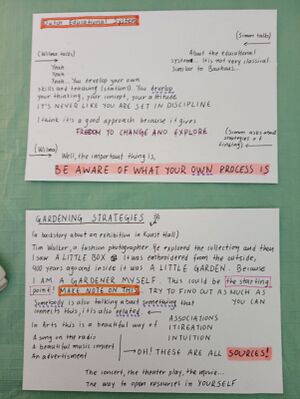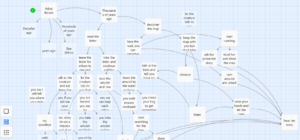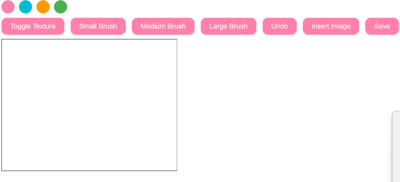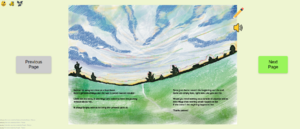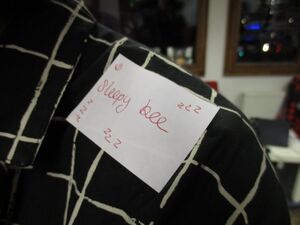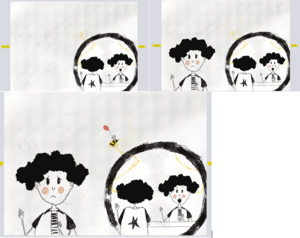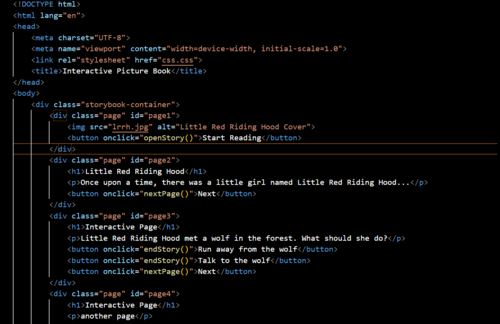User:Suzan/Final presentation
Graduation Presentation
Time (re)capsule
-Rewriting Bee Within was a healing process for myself and getting to change the text immensely and sharing it with peers and kids was a milestone in my personal history.
-Started implementing my interest in knots to other areas in my practice. Although it may seem unrelated, I see a clear connection between concrete thinking that I mention in the thesis with the project making process. It helped me see obstacles, changes and achievements throughout this year more vivdly.
-Working with kids and reshaping the text and illustrations around this was encouraging. It gave me more purpose to share my work and improve it in a meaningful way, outside of my self.
-It was very challenging for me to work with java and css. I think I was too ambitious in the beginning with the plans I had but I think I made a good start to what I want to pursue and extended my limits further.
Special issues
GARDEN LEESZAAL was mostly about thinking about reading/writing proximity, annonating and leaving a mark from the reader for me. All reading is a form of touching, and the act creates a connection between the reader and the text. Some texts encourage reading from certain readers (such as those typeset in braille), while some attempt to be universally accessible (such as those using OCR-A and OCR-B fonts).
It got me thinking about the question "what is a book?" and "what are categories, like in a library, that can define a book?"
I kept these question in mind later on when writing the thesis too. The act of defining something obscure with a name can make the object/person/whatever less threathening in a way, since you can slowly get to know "what" you are up against. Just like in libraries and in the sense of "how?" can we library that. Maybe a start point, true or false in your opinion, a start point to research.
I transcribed our interview with Wilma at the beginning of the issue, manually. Aglaia and I focused on what the transcriber couldnt recognize in the recording. These are pauses, mimics, emotional moments and changes in tone. We tried to capture these moments using different colored pen and types of higlighting.
Using gardening terms as metaphors of archiving or organising a library was where I first started to think about using knots as points of reference and symbol in writing. Gardening and making knots also have so much reference to care and purpose.
MATERIALIZING THE METAPHOR
Terry Pratchett's library: https://wiki.lspace.org/Library
I kept Terry Pratchett's library definition in mind as doing so:
"The Library has endless shelves (some of which are Mobius shelves), but is covered by a dome only a few hundred feet across."
In the Pruning tool shed, I focused on rewriting a text. The python script we made was to scan a page from the book that is edited by the pruner according to the indications on the pruning card and sent to the matrix printer to recreate. The aim was to play with the text phonologically and meaningfully too. So we played with replacing the punctuation, changind words and cencoring as a tool to recreate.
Another question I pondered upon in this special issue and this year a lot too was "What is a game?" Method classes helped me discover what I define as games and what makes a game. This approach is what I tried to carry to making Wink and writing the thesis.
CONSOLE
Making console was consoling. There was many talks about collectivity just like in Garden Leeszaal. Collective healing and rituals was the center of many discussions we had. Dissecting ideology in games through Papa Louie was entertaining and opened up many discussions about connection to games and childhood. These discussions were later on discusses in my thesis too as in how important it is to have certain games introduced to us when kids that are not oriented in winning or losing.
Later on we talked about Tarot cards and fortune telling as a ritual. We read Silvia Federici quite a lot too. Tarot cards and rituals was something I am not interested in or knew anything about so I decided to tackle this as a blank canvas and asked some root questions. Why would anyone want to know their future? It's because of hope and salvation. These youtubers were in "need" of clarity and hope to move forward. But to make such an intimate ritual, a tarot reading for thousand of people to see... Well im still not convinced about that. But our idea was to create tarot cards based on three themes: luck, love and work which were the main themes in these youtube comments under the tarot reading videos. We ended up modding a divination board and 9 cards for these categories, based on youtubers comments. So they are basically in the position of telling someone else's future with their comments. Being a part of the magic circle. Other modding ideas were: other ideas:
-musical tarot cards
-circuit cards
-maze cards
These approaches helped me in thinking about ways of interactivity or playfullness for Wink.
For console, I introduced worry dolls as a ritual and I wanted to make a game. Using social reproduction theory as a starting point, I wanted to research how the title of "witch" changed throughout the centuries. This later turned into a concept that is actually against the core idea of tarot readings, which is solely individualistic. I thought a collective approach to tarot cards would be interesting to pursue, which i was convinced that is healing for so many people.
Witchunting today - What kind of preadtors do we face now? Are they so different to before? what would it look like? a tool to introduce what is happening. connected to own experience, culture, etc.
So we made collage cards with Aglaia, based on the collective and personal traumas we had in our past and designed a tarot game that aims for sharing and safe space, pointing our predators and preys, sharing ways of coping, consoling.
What is the aim? Is it meaningful to make a story? ex. Virginia Woolf in a foreign protest, mix the context to form a tarot story. what are the possibilities and obstacles that she could face today? Are the hunters the police? The state?
The cards required ways of playing and key questions we came up with that could warm up the conversation in this version of tarot. There are multiple expression tecniques such as drawing, writing, speaking. This later on helped me to use improvising as a tecnique when doing workshops with kids and thinking of other ways of expression in the reading experience for Bee Within.
TTY was a little different that the other special issues because it required making weekly. Working with the teletype machine and thinking about limitations was enlightening. Our trip to the telecom museums was a highligh for me into understanding the urgency and improvement? of communication through the years. Making Hey Babe, the phonecall publication was one of my favorite moments. Gathering stories from our friends and families about love and phonecalls was touching. I then did another version, inspired by this at AMRO festival. Working with hardware again after Garden Leeszaal was also fun, understanding how everything works and distinguishing whats possible and not possible to do. Gesture glossary was another publication I enjoyed making a lot. We decided on the gestures that we want to put in the glossary together and came up with definitions collectively. It was like creating our own manual of communication.
Note taking on a large piece of paper every class was a great way o f research that led to the creation of overlap. Seeing what kind of notes we took that are common and decoding our thought processes.
There are many discussion on annotations, concrete poetry, limitations to language and expression in the teletype that stuck with me this year too. This is also when I decided to improve rapid prototypes on knots. make the poem into one string, make the poem into different strings without order, make empty string... I started building an idea of how I would like to approach my research on interactivity and writing/researching practice. More here.
ALL IN ALL
I see great connection between last years special issues and this years practice. It definitely gave me perspective into thinking outside the box with storytelling and sharing. Most important keynotes are about research practices and knots, metaphors as definitions and ways of healing. Last year and this year hasnt been very easy for me personally, but I think I made it through with the special issues and readings and sharing we did...
The skills I got through these special issues helped me immensely in starting research for thesis and project and being more bold about my options. Laser cutting, woodworking, gluebinding and paged js and working around git hub, Learning to use python for games was essential for this years work.
Another important intake is the skill or organising an event, how to write a tech rider and to communicate with the hosting gallery/space.
Prototyping then and now and building up to the Project
Last years prototyping classes were an encouragment for me to start prototyping Wink. All i know about coding is what I learnt in the past two years in classes and I must say im not really good at it yet, but I have the interest. If i told myself from 2021 that I made a prototype and coded it myself, I would not believe me. So these past years are very important for me into seeing what I can do and dream of.
I never documented work before xpub and now I see how important it is to look through the process and find connections and repetitions. Now im archiving and making a website for later to share my work.
working with text based games, click games, page js was essential to revisit this year with graduation work. I wouldnt be able to approach to Wink! the way I did without these. Rapid prototyping sessions are something that I will carry along in my future research and work too. It fits so perfectly to the way I like to start think about ideas and possibilities.
the playfullness of these are very special to me:
Entry: walk out of the aquarium, into the studio from the main door and back into the aquarium. describe every detail you saw to people in the room.*Author suzan*Date 17.05 16:00*medium (text,visual, sound, performance, code) verbal (or transcription? recording?) yes
Entry: everyone photocopy their hands and puts them in the copies on the table. Whoever guesses the right hand and copy will recieve a firm handshake from that person. duration max 2 min.*Author suzan*Date 17.05 medium (visual, sound, performance, code) performance
Entry: one person closes their eyes and holds a pencil. other people around this person will try to lead them into drawing an apple. But one person will mislead. *Author suzan*Date today*medium (visual, sound, performance, code) visual
This is the drawing pad i made to firstly use asa stroytelling or building aspect for Bee Within. My main goal was to maybe use the drawing pad as a `create your own adventure` option. The user can draw a scene or paint on an existing image and progress the story like this by adding frames to it. I nthe end I made it an option to use as reading.
At first, my approach was to make Bee Within interactive and with multiple endings. But throughout the workshops with kids, I realised that they are more interested in the other characters than the main story being interactive. So I began working out side stories for the bee and the tree.
Alongside these try outs I was revisiting the rapid prototypes from first year and building workshop ideas for the public moment in Leeszaal. I was interested in seeing how everyone approaches knots as an idea, a metaphor in literature. It was very helpful for me to set intentions for the thesis format. Which in the end became in a non linear knotted format. Quite chaotic in its own order, connecting and symbolic in its nature and works seperately in itself.
As i do improv theatre in my spare time, I discussed with my improv teacher about activities that could be done with kids around this research. She offered some insight and tips to make workshops with kids more fun and compact. So I started prototyping workshop ideas with kids.
I first though of connecting the interactive elements with knots and working around this overarching theme. But it ended up being very confusing for me, so doing these with kids wasnt an option anymore.
I simplified my goals and decided to do the workshops to first of all see if Bee Within, in its latesst version makes sense to kids or not. Then to see how they think of the characters and build their possible interactivities upon that and thirdly to see what extra elements i could add like sound, drawing, writing.
In the end the story was too long so I had to edit it to a shorter version which i think can be more shorter in the future. I showed the kids some sketches for the illustrations and they told me their opinions so I made them more colorful and drew Maya, the girl according to their inputs.
Adding a baloon for queen bee was something I got inspired from in the last workshop where one kid was making sound effects for another kid who was on stage and she was acting as a 'tired bee' and I thought it could be a nice way to show the queen bee's vulnerability in the story.
Here is a little summary of the workshops as prototypes for the project.
| Workshop 1 | Workshop 2 | Workshop 3 |
|---|---|---|
| reading stories and improvisation (20min) | improvisation without the story with the characters (20min) | Foley workshop to see what audio elements to include |
| -I started by reading Bee Within and the two side stories to kids to see if they can catch up with multiple storylines. | -I wanted to see if kids' approach changed to these characters if they didnt hear the story. So I summarised the plot and we immediately went into playing mode. | -Foley workshop was dedicated on sound. |
| -The second ten minutes was little improvisation warmups in a circle and acting as the character they chose. Such as busy bee, wise tree and shy kid | -we seperated in three groups for each character and walked around embodying the mood we chose for the character. | -Three kids acted and three of them made sound effects for them off stage with the supplies I brought from home like alluminum foil, baloon and paper. |
| -overall the improv games showed me some tips into changing some of the interactive elements I thought for these characters. Kids were confused with the multiple stories at first but caught up a while later. They were interested mostly in the bee and least in the kid. We had a short session at the end to critisize the illustrations. | -I guided them into changing the emotions and tried to observe how they embodied these emotions. We drew our character for the day at the end of the session. | -It was very fun but ended up being only a playtime. They enjoyed it very much but got completely distracted from the story. |
Thesis
I practically explored different ways of writing and challenging the reader and technocally I pursued an answer to the question: How can interactive picture books be used to foster curiosity for reading and creativity for children?
The thesis was a delight to write. I tried to make it simultaneously with the workshops although the digital prototype wasnt ready yet. Writing with an overarching and symbolic theme of knots was very confusing at start but very experimental towards the end. It was a playful moment for me to practice multiple stories within one and different modes or reading.
Having three modes of reading to the thesis was challending but good to try. I think the result is a combination of everything I learnt during these two years working woth text in an unconventional way.
Forming the thesis in "loops" and "bends" was a good way of writing for me. Concrete thinking with a string in hand and reading on interactivity for children was productive. Im glad to share this way of thinking with the readers.
In the workshops I saw that kids were very interested and I feel like im on a right path. The thesis question is still a research topic for me, with the light of things I learnt and the prototype I have in hand.
Grad catalogue and show
For the graduation catalogue, we are working on paged js and making outr last collective publication in XPUB. Its been great to work in a web to print tecnique. Its still a struggle to get my side notes with knot images in the markdown and html. But we are getting there!
For the graduation show, Im planning on showing the Wink! page on a screen to be read, print the book and thesis and have a corner with a paper mache\cardboard tree which i started building and ofcourse some bees. There will be empty leaves for visitors to add on the tree if they want to share their stories on grief or their versions of the tree, the bee and the kid. Mostly it will be great to discuss the process of making and deciding with everyone!

